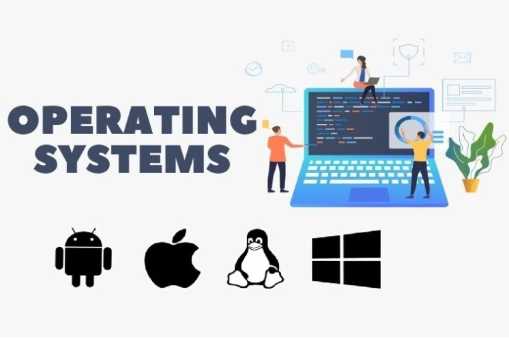
What is an Operating System? | OS Explained for Beginners
Introduction
Ever wondered what makes your computer, laptop, or smartphone actually work? Behind every click, tap, or swipe, there’s an unseen hero running the show — the Operating System.
Whether you’re using Windows, macOS, Linux, or Android, the OS is what brings your hardware and software together and makes the device usable.
In this blog, we’ll explain what an operating system is, what it does, and look at some popular examples — all in simple terms.
What is an Operating System (OS)?
An Operating System (OS) is the main software that manages all the hardware and other software on a computer or device.
It acts like a bridge between the user, the hardware, and the software. Without an OS, your computer would just be a pile of electronic parts with no way to function properly.
Want to learn more about how software works in general? Check out our blog on What is Software? | Computer Software Explained for Beginners.
What Does an Operating System Do?
Here are the core responsibilities of an OS:
| Function | What It Means |
| User Interface | Lets users interact with the device (Graphical UI like desktops, icons, etc.) |
| Hardware Management | Controls devices like CPU, memory, keyboard, mouse, and printer |
| Software Coordination | Runs and manages apps like browsers, games, or office tools |
| File Management | Organizes files and folders, manages storage and data access |
| Multitasking | Allows multiple apps to run at the same time |
| Security & Access Control | Manages user permissions and system protection |
Think of the OS like a manager at a busy restaurant: taking orders (user inputs), coordinating staff (hardware), and making sure every meal (task) is delivered on time.
You can also read: How Hardware and Software Work Together
Common Examples of Operating Systems
Here are some popular OS platforms you might already be using:
| Device Type | Operating System Examples |
| Computers (PCs) | Windows, macOS, Linux |
| Smartphones | Android, iOS |
| Smart TVs | Android TV, webOS, Tizen |
| Servers | Ubuntu Server, Red Hat Enterprise Linux, Windows Server |
Looking for more system software types? Don’t miss our article: What is System Software? | OS, Device Drivers, and Utilities
How Does the OS Work Behind the Scenes?
Let’s say you click on a music player app:
- The OS receives your request.
- It finds the app and launches it.
- It allocates memory and allows access to speakers.
- It monitors the app’s performance and allows you to use other apps simultaneously.
All this happens in a blink — thanks to the OS.
To understand the different types of software like this, see: Types of Computer Software | System, Application & More
Why Is the Operating System So Important?
- Without an OS, users wouldn’t be able to run software or access hardware.
- It ensures that system resources are used efficiently.
- It provides a platform where developers can build and run applications.
- It protects data and system integrity with security layers.
Want to dive deeper? Learn about Application Software and how it works alongside the OS.
Key Takeaways
- The Operating System (OS) is essential software that controls and coordinates all parts of a computer.
- It manages hardware and software while providing a user-friendly interface.
- Examples include Windows, macOS, Linux, Android, and iOS.


